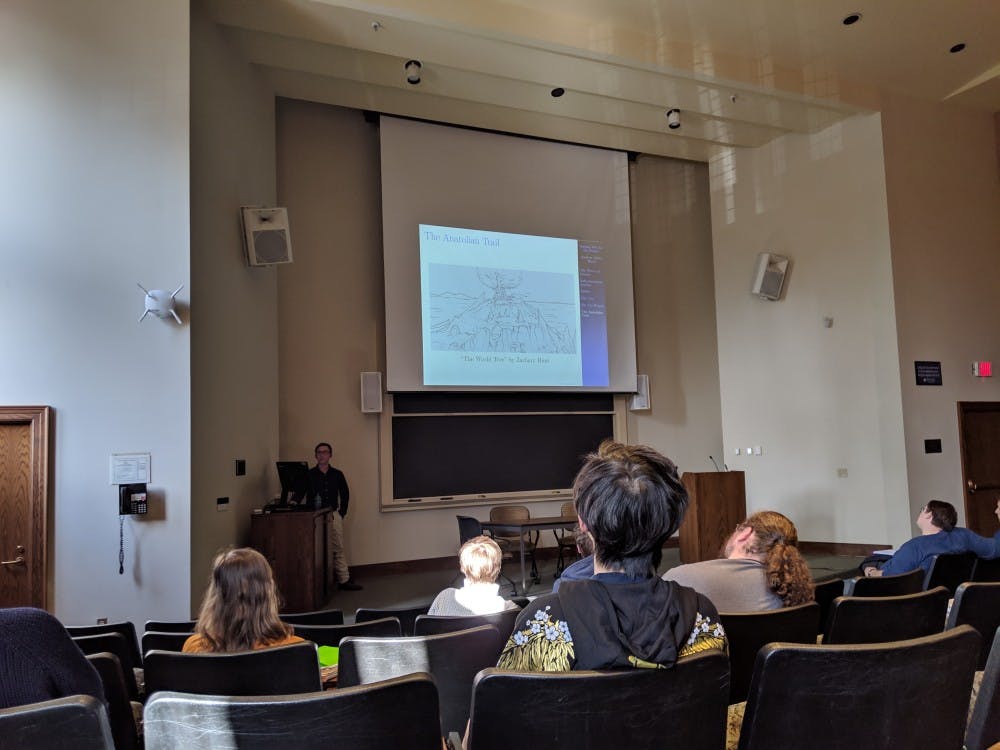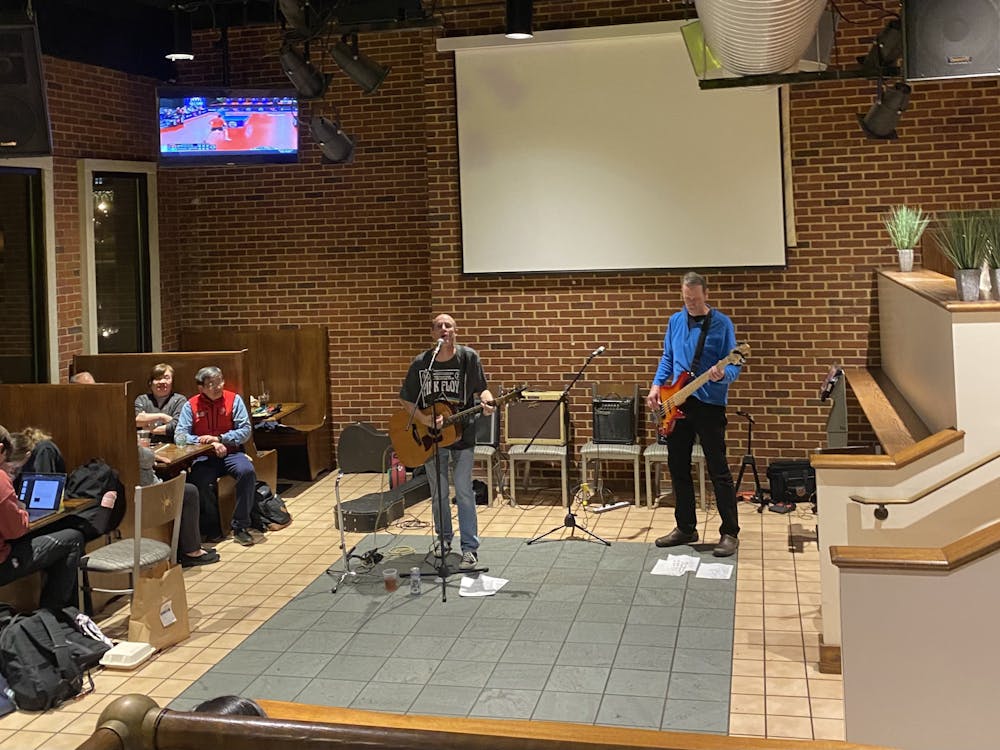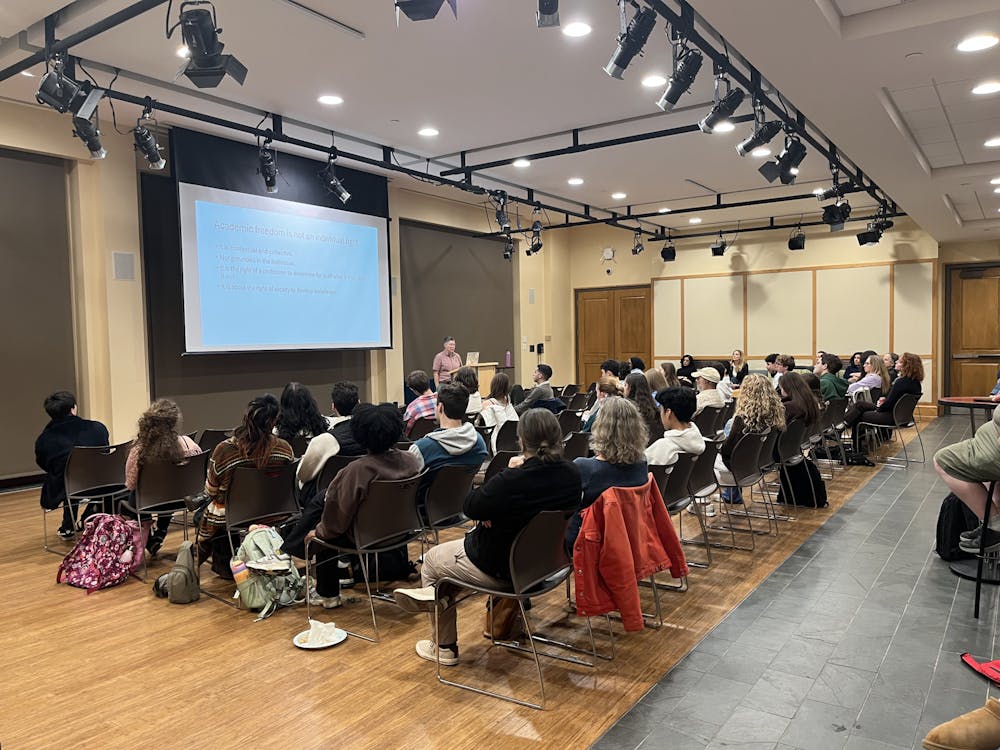Andrew Miles Byrd, a linguistics professor at the University of Kentucky, presented on the role of Proto-Indo-European (PIE) languages in modern media and entertainment and discussed ways to make PIE study more accessible.
The lecture took place on Monday, April 1, in a Jepson Hall classroom.
PIE is the ancestor of Indo-European languages, which were spoken across Europe, the Middle East and some of Asia, Byrd said. PIE was "spoken by a people who lived from roughly 4500 to 2500 B.C.," according to Archaeology Magazine. Because there are no written records of PIE, scholars have reconstructed the language by comparing languages descended from it.
Dieter Gunkel, an assistant professor of historical linguistics in the University of Richmond classics department who worked with Byrd in graduate school, organized the presentation.
Gunkel said that, traditionally, Indo-European linguistics was inaccessible until one learned Ancient Greek, Sanskrit and Latin.
But Byrd is trying to make PIE languages more accessible to the general population.
“[Byrd has] been doing really exciting stuff recently, a lot of which has to do with language design for movies, television stuff and also one of the 'Far Cry' games,” Gunkel said.
Byrd has designed languages for the National Geographic show "Origins" and for the Ubisoft video game "Far Cry Primal."
"Far Cry Primal" is the sixth entry in the high-budget, first-person action-adventure series, and takes place in 10,000 B.C. It was the best-selling game for the month it was released.
Creating a language for "Far Cry Primal" was a very labor-intensive project, Byrd said, and involved a combination of selecting vowel sounds and words based on PIE languages and making creative adjustments based on the game developer’s feedback.
“This job was huge, much bigger than the 'Origins' job,” Byrd said. “For the 'Origins' job, I translated maybe 50 to 100 words per language. This game, by the end of it, we translated 40,000 words.”
During the presentation, Byrd ran through a list of some of the Wenja words – Wenja is the dialect he created for "Far Cry Primal" – in the same way he and his wife used to teach the actors for the game. He started by speaking introductory phrases and having the audience repeat the words. He pointed out similarities between his language and other Proto-Indo-European languages, and spoke about how this comparative approach could be used to learn the meanings of PIE words.
Enjoy what you're reading?
Signup for our newsletter
But Byrd said he had realized while designing Wenja that the culture of the people in the game was completely different from PIE culture. As an example, Byrd said he had asked the Ubisoft development team why the tribes in 'Primal' did not have horses, an essential part of PIE culture.
So after he finished his work on "Primal," Byrd decided to design a video game that used not only PIE languages but also PIE culture. Using a grant from the National Endowment for the Humanities, he began work on his game.
Byrd's game, "The Anatolian Trail," is an adventure game set in a part of Turkey called Anatolia, or Asia Minor. Players must travel on the Anatolian trail, learning about both PIE language and culture. To learn the language, players will have to compare syllables and vowel sounds to solve puzzles. They will also meet PIE gods and fight monsters from PIE legend.
Byrd hopes that the game will make PIE language and culture more accessible to everyone, while at the same time providing strong entertainment value.
The presentation was followed by a Q&A session, where students and members of the Richmond community asked Byrd about designing languages and the process for creating a game.
Christopher Rein, a senior studying Arabic who attended the presentation, knows how difficult making a PIE language can be. He tried to make one in high school, he said. Even though Rein attended the talk as part of an archaeology class, the PIE part of Byrd's presentation fascinated him.
“I actually came for the linguistics part,” Rein said. “I had the option to go to three different presentations, but I knew immediately I wanted to go to this one.”
Contact news contributor Andy Erickson at andrew.erickson@richmond.edu.
Support independent student media
You can make a tax-deductible donation by clicking the button below, which takes you to our secure PayPal account. The page is set up to receive contributions in whatever amount you designate. We look forward to using the money we raise to further our mission of providing honest and accurate information to students, faculty, staff, alumni and others in the general public.
Donate Now



